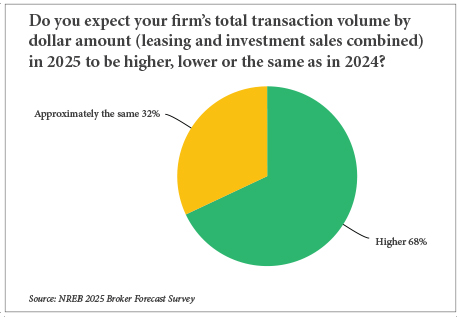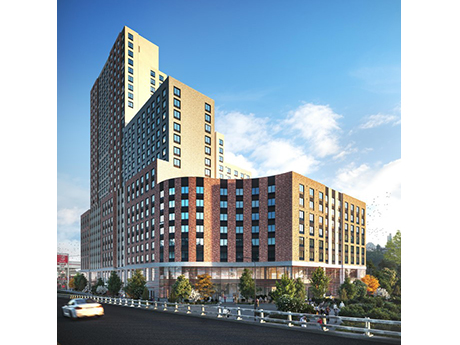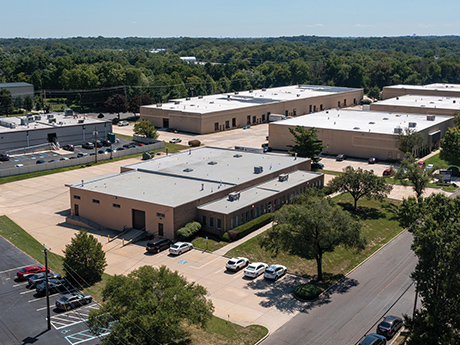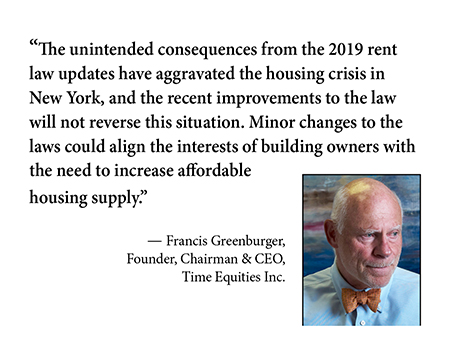By Wick Zimmerman, CEO of Outside the Lines Inc. In the Northeast’s evolving commercial real estate landscape, mall owners and operators are navigating now-familiar headwinds: changing consumer behaviors, declining legacy retail brands and the sustained presence of e-commerce . Yet amid these pressures, a reinvention is underway. Malls are shedding their images as static retail venues and transforming into immersive, tech-enabled destinations — and it’s not traditional retail driving the charge. It’s Gen Z, a digitally native, experience-driven cohort that’s redefining what mall real estate can and should be. This shift presents both a challenge and an opportunity for regional retail stakeholders. The challenge? Retrofitting aging assets to meet evolving demands. The opportunity? Creating diversified, high-traffic destinations that outperform their square footages in terms of both revenue and relevance. From Shopping Centers to Engagement Anchors Once emblematic of suburban retail, malls across the Northeast — from Long Island to greater Boston — are increasingly being reimagined as hybridized spaces that combine shopping, entertainment and community programming. In densely populated, high-barrier markets, where new development is constrained, adaptive reuse initiatives are driving the charge. Class B and C malls, in particular, are being repositioned with new anchors — not department stores, but …
Northeast Market Reports
By Taylor Williams The retail markets throughout the greater New York City area have been starving for more quality space in the post-pandemic era, with ground-up supply gains rarely hitting the market outside of obligatory inclusions within apartment buildings and highly curated clusters at mixed-use developments. According to JLL’s latest market report on New York City, as of the first quarter of 2025, there were approximately 200 availabilities across Manhattan’s “prime” retail submarkets — a record low. Average asking rents leapt 7.4 percent between the fourth quarter of 2024 and the ensuing period, settling at a rate of $577 per square foot. The report identified traditionally ritzy retail corridors and hotspots such as Fifth Avenue, Madison Avenue, SoHo and Times Square as recipients of the “prime” label, also designating the Williamsburg district in Brooklyn as one such area. So when well-located spaces formerly occupied by retailers that are now defunct or aggressively downsizing become available, they tend to draw major, immediate interest. “Expanding retailers have substantial opportunities to backfill big box and junior spaces vacated by bankrupt chains,” says Mitzi Flexer, managing director in the New York City office of national brokerage firm Bradford Allen. Flexer says that a notable …
By Taylor Williams So much for “survive ’til ’25.” Until a couple months ago, industrial owners in the markets of New Jersey and Eastern Pennsylvania had good reason to believe that 2025 would be a year in which ground-up development got back on track. And in those markets, which are defined by their density and sticky tenant demand, new supply is rarely a bad thing. According to the latest data available from Colliers, industrial vacancy rates in Philadelphia County, Southern New Jersey and the Lehigh Valley all rose in the fourth quarter by anywhere from 80 to 150 basis points. The regionwide vacancy rate stood at roughly 7 percent at the end of 2024, up from 6 percent in the fourth quarter of 2023. The Colliers report also noted that while more than 6 million square feet of predominantly speculative product came on line in the first quarter of 2025, subsequent deliveries were forecast to decline by 40 to 50 percent in each ensuing quarter, “signaling a slowdown in supply for the remainder of the year.” Demand in the region remains healthy but has undoubtedly moderated from record levels that prevailed several years ago, according to Scott Mertz, SIOR, president …
They may not be ready to do cartwheels and pop champagne, but when it comes to business expectations for 2025, commercial real estate professionals in the Northeast have a decidedly brighter outlook than in recent years. The last two years have been defined by barriers to economic growth on numerous levels. Pick your post-COVID geopolitical or macroeconomic poison — stubborn inflation, crushing interest rate hikes, multiple wars, restarting of global supply chains — all culminating with an incredibly heated U.S. presidential election. Is it any wonder that “survive till ’25” became the rallying cry of the commercial real estate industry? And while 2025 has arrived, the election has been decided and the Federal Reserve has strung together a series of small, yet meaningful cuts to short-term interest rates, the hangover from the aforementioned disruptors has not fully evaporated. Donald Trump’s return to the Oval Office brings a fresh slate of questions about how certain policies — namely tariffs and mass deportations, will impact business at both the national and local levels. And the expectation-smashing December jobs report proved sufficient to immediately pause the Fed’s would-be pattern of rate cuts. And it’s only been one month. As such, cautious optimism is …
By Maya Khan, managing director, CBIZ Between the pandemic and the advent of hybrid work, it’s been a challenging stretch for the New York City office market. But savvy investors see skies clearing as interest rates come down and more employers call workers back to the office. The stabilizing market also offers new opportunities for office-to-residential conversions, thanks to recently enacted state and city incentives. In fact, office buildings sold for such purposes accounted for 50 percent of all development sales in Manhattan in the first half of 2024, according to data from Ariel Property Advisors. In what follows, we’ll take a deeper dive into those trends and look at how some New York real estate leaders who spoke at CBIZ’s “Manhattan to Main Street” panel are taking advantage of the current environment. The event, held in the fall of 2024, focused on the trillions of dollars in commercial real estate debt that is set to mature before 2028 and broader economic factors influencing the New York real estate market; it drew 85 attendees from the local real estate community. Opportunity on the Upswing It’s no secret that the Big Apple’s office sector has taken a beating in the past …
By Hayden Spiess Though uncertainty — economic, political and otherwise — has been a theme of 2024, retail real estate markets throughout the Northeast have proven itself reliably strong. Even certain headwinds like high construction costs and minimal quality space to accommodate growth have ultimately helped fuel robust fundamentals throughout the region. Now, brokers, investors and developers in those markets are looking ahead with optimism and faith in persisting tailwinds. Quality Space Shortage Vacant retail space in Northeast markets has been hard to come by this year, and professionals in the region aren’t expecting that to change anytime soon. The equation, they say, is simple. While retailers’ appetite for expansion has remained healthy, new construction and deliveries have been very limited. “Almost nothing has been built in the past 10 years,” says Dan Zelson, principal with Charter Realty. “There’s really just very little new product.” Steve Gillman, partner at The Shopping Center Group (TSCG), notes that while some smaller, single-tenant buildings may still be coming on line, “nobody is building a big strip center with 100,000 square feet.” “There’s that imbalance of supply and demand: demand by the retailer and lack of supply of space,” adds Daniel Taub, senior …
By Jason Penighetti, Esq., and Carol Rizzo, Esq. of Forchelli Deegan Terrana Together with high rent and exorbitant property values, the real property taxes that fund necessary services in New York State make housing affordability a significant concern for low- and middle-income residents. To ensure a sufficient supply of affordable housing, the state must address the ad valorem levy, whereby taxes are derived from a property’s market value. This article examines the critical interplay between New York’s property tax policies and housing affordability. While some taxing mechanisms hinder the development and availability of affordable housing, adjustments and a few additions to those practices have the potential to promote the affordable sector. Exemptions, Incentives New York’s real property tax system supports a complex framework of entities that rely significantly upon property tax levies to generate revenue and fund their budgets. Property taxes, assessed at the local level, support essential services such as public schools, police departments, libraries, highways, fire districts, open space preservation, out-of-county college tuition and the New York State Metropolitan Transportation Authority, among others. To encourage the development of affordable housing and ease the burden that real property taxes can impose on developers and owners in the sector, New …
By Taylor Williams From an investment perspective, the New Jersey industrial market has plenty going for it: residential density throughout, proximity to major ports, high barriers to new development — but not even those fundamentals could shield the sector from macroeconomic variables that have caused deal volume and velocity to drop in recent years. Given the benefit of hindsight, the decline in industrial investment sales activity between late 2022 and early 2024 is not really surprising. Like most major industrial markets, those of both Northern and Southern New Jersey saw explosive demand for space in the early months of the pandemic as Americans sheltered in place and did their shopping online. Rents soared to record highs; cap rates compressed to historic lows. Institutional capital planted its flag in the Class A trophy space, and investors of all types duked it out for everything else. It was a hell of a party, but it couldn’t last. And when the lights began to come back on in the form of rising interest rates, sellers that didn’t have to sell generally chose not to. “Cap rates leveled off with the pricing discovery that went on when interest rates started rising,” explains Marc Isdaner, …
By Francis Greenburger, founder, chairman & CEO, Time Equities Inc. The recent changes to New York laws regarding rent-stabilized apartments, included in the 2024 budget legislation and signed into law by Gov. Kathy Hochul, are a step in the right direction. Unfortunately, the step is so small that the effect will be the same as standing still. Much of the initial commentary on 2024 housing law updates was about the so-called “good cause eviction” provisions, which have little to do with eviction but are instead a rebranding of rent control. In 2019, the legislature made significant changes to the rules governing rent-stabilized apartments. Most legislators who voted for this bill undoubtedly hoped to help New York State meet its affordable housing needs, but the opposite has happened. Thousands of low-cost, rent-stabilized apartments have since become vacant and remain so. Many of these apartments were occupied by tenants or families for 40 years or more. Apartments require capital investments periodically, and expectations for housing change dramatically over long periods. Renovating these units to meet modern standards requires significant investment, often mandated by housing code. Until the changes, building owners were willing to make these investments because they were permitted to increase …
By Taylor Williams Heath Ledger, squaring off against Batman as The Joker, observed, “so this is what happens when an unstoppable force meets an immoveable object.” The late great actor’s metaphor for the stalemate that ensues when entities of equal and opposing power collide could almost be used to describe the current state of the Boston retail market. For while the sector continues to see high levels of tenant demand and the locale retains an array of proven demand drivers, the lack of new supply means that a ceiling of sorts on the growth of the market as a whole is taking shape. And the factors that form the foundation of this ceiling are very unlikely to bend, much less break. Minimal gains in new inventory have long plagued the Boston retail market, and the current scenario is no exception. According to data from CoStar Group, the market added 518,000 square feet of new space in the 12-month period that ended June 30 but absorbed approximately 1 million square feet of space during that time. Vacancy thus remains extremely tight at 2.3 percent. In formulating its latest report on the Boston retail market, CoStar noted that Beantown retailers would “largely …
Newer Posts











